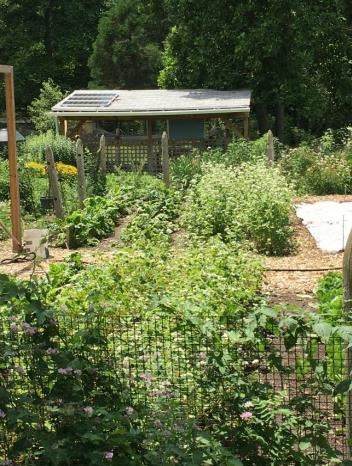Hello AZH!
The 4 recipients of the 2018 Wendy Andrew Cultivation Grant have been busy making great progress on their projects that we take great pride in being able to assist with funding. The following institutions have reported reaching positive milestones in their efforts:
Butterfly Pavilion—Browse Café
In late May, volunteers planted veggies, fruit, herbs and edible flowers for stick insects, beetles and roaches w/ volunteers (see list in Appendix) in northeast corner of Discovery Garden, which includes in-ground crops, raised beds and container plantings. These plantings are regularly cared for by horticulture staff and volunteers. Right now, we have primarily greens, herbs and flowers available to harvest. Horticulture staff and volunteers collect harvest and provides to animal care staff on a twice-weekly basis. Horticulture staff hand-painted labels for each crop, so that even self-guided visitors to the garden can identify the plants being grown as browse.
The summer season begins this week with our youth volunteering program orientation. These kids will work with homeschool students and summer campers to plant additional crops, water, weed and care for the food crops. Regular “garden safaris” also allow zoo guests to participate in growing food for our animals. It’s fun for the guests to learn that our animals enjoy many of the same foods that they do, even if they utilize different parts of the plants from humans. Horticulture staff worked closely with our educators to develop the appropriate curricula and buy the props and supplies needed to keep the program going all summer.
Rolling Hills Zoo—Bringing Bees Back to the Garden
The construction for the foundation of the bee hives was built April 12-13th. This construction included a 2 x 6 wooden frame that was leveled from the grade and backfilled. The frame was then filled with crushed limestone followed by a 2 x 4 wood cedar frame that was placed and leveled on top of the limestone.
RHZ staff installed and prepared the brood boxes for the arrival of the bees on April 16, 2018. Then two of the three Nucs* arrived and were installed in the brood boxes on April 23rd. The third Nuc will be installed at a later date. The Nucs, or nucleus colonies, are small honey bee colonies created from larger colonies. The term refers both to the smaller size box and the colony of honeybees within it. The name is derived from the fact that a nuc hive is centered on a queen, the nucleus of the honey bee colony.
To-date, the bee colonies are thriving and gathering pollen, thus lessening their reliance on the sugar water which was provided to the colonies when they arrived.
The equipment that we have purchased so far includes two bee suits plus gloves, three full bee hive box setups, and a bee brush. Other equipment will be purchased as needed.

At this time we are in the process of developing the wording and graphics for the signage leading up to and at the bee hives. This signage will talk about the decline in honeybee populations in the US, the importance of the bees to our ecosystem and the inter-relational importance of bees in our world, Signage will also talk about the bees themselves and the complexities of bee keeping.
Sacramento Zoo—Plant Identification/Signage
Location of signs (what area of the zoo) has been decided. Quotes have been obtained on the sizes/material of the signs. Preliminary selection of the plants to be labeled has been done, with the final list to be completed by May 31st, 2018. Hope to have the signs ordered by the first week in June and installed by the end of July.
Zoo New England—Organic Garden
As of June 2018, we have received 100 sq. feet of lowbush blueberry bushes that will be planted behind the apiary in the organic garden at Franklin Park Zoo. We will be obtaining and planting gooseberry, paw paw, and ostrich ferns shortly.
Zoo New England Organic Garden